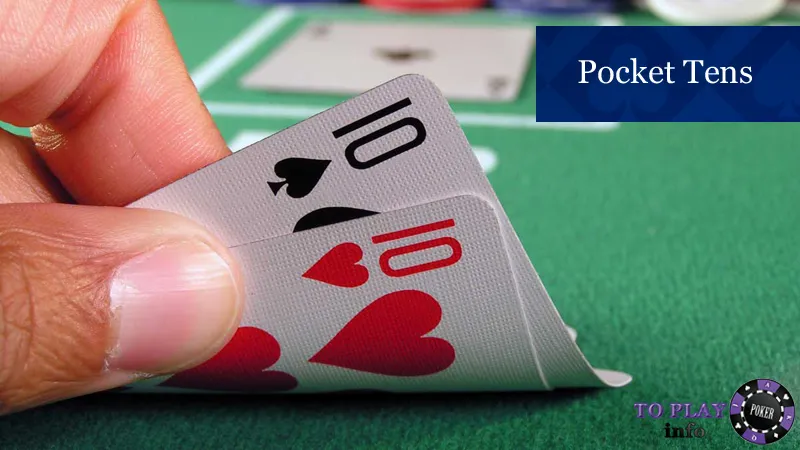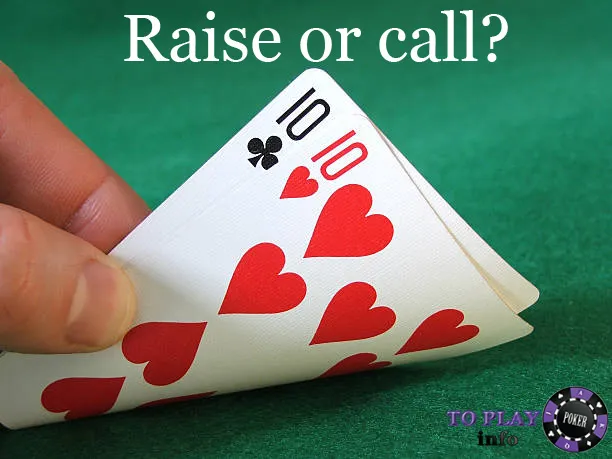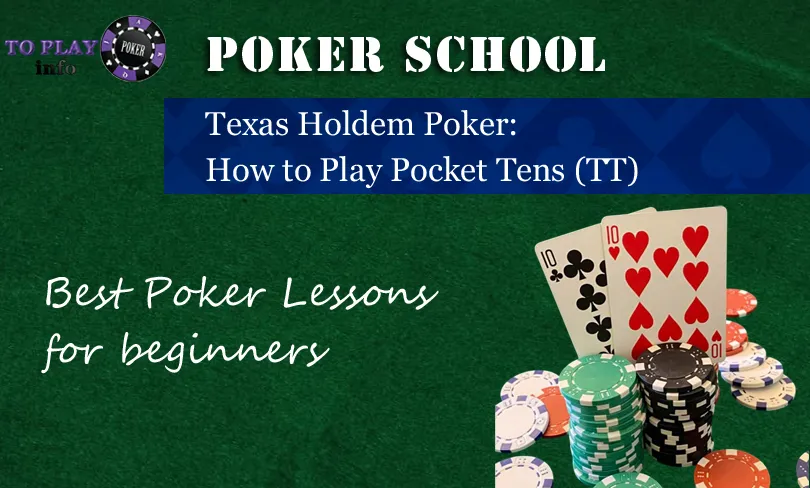Pocket tens poker strategy is one of the most deceptively complex aspects of No Limit Texas Hold’em. Also written as TT, they sit at the border between premium and medium-strength holdings, making them both powerful and dangerous.
In this article, you’ll learn how to play pocket tens in poker profitably — including the best preflop lines, flop strategies, and common mistakes to avoid.
Contents:
- Why Pocket Tens Are a Pivotal Hand
- How to Play Pocket Tens Preflop
- How to Play Pocket Tens on the Flop
- Common Mistakes with Pocket Tens
- Final Thoughts
- FAQ: Pocket Tens Strategy
Pocket Tens Poker Strategy Overview
This section covers preflop principles, flop scenarios, and common mistakes — everything you need to know about pocket tens poker in real games.
Why Pocket Tens Are a Pivotal Hand

Unlike aces or kings, TT often faces overcards on the flop. At the same time, it still crushes most unpaired hands and dominates many lower pocket pairs.
That’s why TT are such an interesting test of your skill — they force you to balance between aggression and caution.
How to Play Pocket Tens Preflop

Knowing how to play pocket tens preflop depends on your position, stack size, and opponent tendencies. While TT looks strong, it can become difficult to manage without a clear plan — especially against aggression.
Early Position (EP)
In early position, pocket tens are strong enough to open-raise, but not strong enough to face major 3-bet pressure comfortably. You should fold to big 4-bets and avoid bloating the pot out of position.
Middle and Late Position (MP / CO / BTN)
From these spots, TT plays much better. You can open-raise confidently and sometimes 3-bet versus weaker opens — especially from the button or cutoff.
Facing a 3-Bet
When facing a 3-bet with mid-premium pair, you have three options: fold, call, or 4-bet. In most cases, calling in position is best, especially against tight players. Avoid 4-betting unless you have reads or blocker-based reasons.
“TT is a strong hand, but don’t get married to it — especially out of position.”
How to Play Pocket Tens on the Flop
After the flop, the value of pocket TT depends heavily on board texture and number of opponents. Since overcards (J, Q, K, A) are common, you often have to play TT with caution.
Flops with Overcards
If the flop contains an overcard — like — it’s usually best to check and evaluate your opponent’s actions. Don’t automatically assume your TT is beaten, but don’t overplay it either.
In position, you can often check back and control the pot. Out of position, consider check-calling one street and folding to further aggression unless you improve.
Safe Flops (Low or Paired Boards)
On boards like or , TT is likely ahead. In these spots, you can value bet against overcards, smaller pairs, and straight draws. Consider betting for protection as well.
Multiway Flops
In multiway pots, be more conservative. Even if the flop seems favorable, the likelihood of someone holding a higher pair or drawing combo increases. Look for showdown value rather than pushing for thin value.
Common Mistakes with Pocket Tens
Even though TT is a strong hand, it’s easy to misplay in certain situations. Here are the most common errors to avoid:
❌ Overplaying Tens After the Flop
Many players overvalue TT postflop — especially on boards with overcards. Don’t auto-stack off just because you have a pocket pair. Use position, betting patterns, and board texture to guide your decisions.
❌ 4-Betting Too Lightly
While TT looks strong, it’s not a great hand to 4-bet bluff or 4-bet for thin value unless you have specific reads. Against most 3-bet ranges, calling is safer and keeps dominated hands in play.
❌ Slowplaying on Wet Boards
On coordinated boards (like ), many players slowplay TT — only to lose to turned straights or two-pair combos. Protect your equity and don’t get fancy when simple value betting works.
“The strength of TT lies in controlling the pot, not dominating it.”
Final Thoughts
Pocket tens poker requires balancing aggression and discipline. It’s a pivotal hand in No Limit Texas Hold’em — strong enough to win big pots, but vulnerable enough to lose them if misplayed.
By understanding position, opponent tendencies, and flop texture, you can turn TT into a consistent winner instead of a tricky trap. Be aggressive when ahead and disciplined when behind — that’s the real key to playing tens profitably.
“Pocket Tens will reward you — if you don’t fall in love with them.”
FAQ: Pocket Tens Strategy
TT is often considered a borderline premium hand. It’s strong enough to raise but must be played cautiously against aggression.
Usually no — unless stacks are short or you’re up against a wide range. In deep-stack play, TT is better as a call than a shove.
Use pot control and avoid auto-betting. Evaluate opponent range and consider checking, especially out of position.
Any pair higher than TT, overcards that connect postflop (JQ, AK), and combo draws on wet boards.
Yes, especially in late position or as a 3-bet bluff catcher. Just avoid overplaying it versus tight players or deep-stack 4-bet pots.
The best pocket tens poker strategy involves open-raising from most positions, avoiding overplays on high-card flops, and using position to control pot size. In tournaments, TT is especially strong against wide ranges.
Looking for more hand-specific strategy? Check out our full guides on Pocket Aces, Pocket Kings, and Pocket Queens.



Facebook Comments